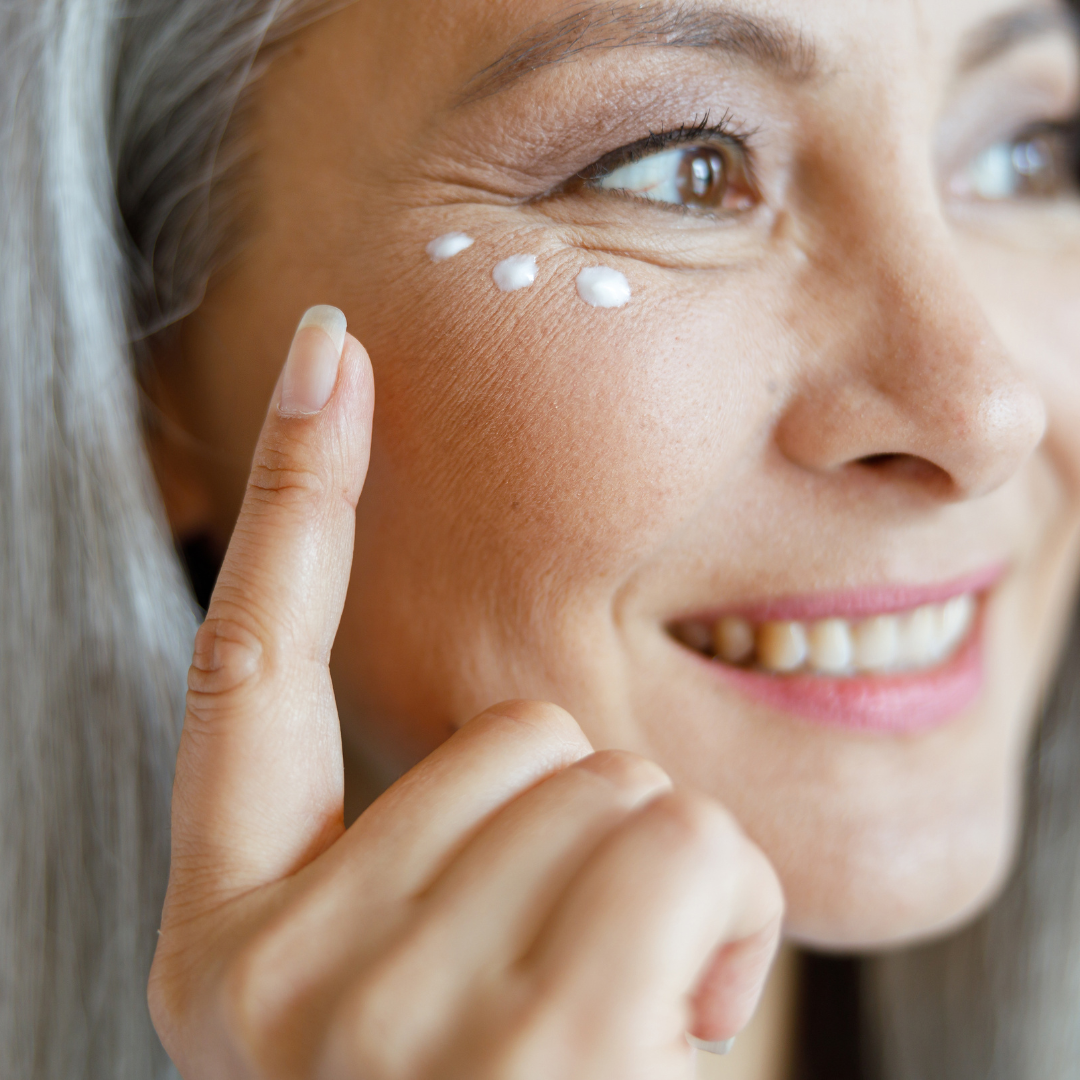The Ultimate Guide to Choosing the Best Eye Cream for Older Women
As we age, our skin loses elasticity and becomes thinner—especially around the eyes. This delicate area is often the first to show fine lines, wrinkles, puffiness, and dark circles. With so many products on the market, it can feel overwhelming to choose the right one. This guide explains what to look for in an eye cream, the best ingredients for mature skin, and how to match a formula to your unique skin type and concerns. We’ll also share dermatologist-approved picks for the best eye creams for older women.
Skip To:
- What Skin Challenges Do Older Women Face Around the Eyes?
- Understanding Different Skin Types
- How to Identify Your Skin Type at Home
- Key Ingredients to Look for in Eye Creams
- What Are the Best Types of Eye Creams?
- How to Choose the Right Eye Cream for Your Needs
- Best Eye Creams for Mature Skin (Expert Picks)
- Frequently Asked Questions
What Skin Challenges Do Older Women Face Around the Eyes?
The eye area is one of the most delicate regions of the face, and it naturally shows signs of aging earlier than other areas. Here are the main concerns:
- Wrinkles and fine lines: Caused by loss of collagen and elastin with age.
- Dryness: The skin’s moisture barrier weakens, making lines more visible.
- Dark circles: Thinner skin reveals blood vessels; hollowness creates shadows.
- Puffiness: Often linked to fluid retention, sleep patterns, or allergies.
- Environmental damage: UV rays and pollution accelerate visible aging.
Understanding Different Skin Types
Knowing your skin type is essential before choosing an eye cream:
- Normal skin: Balanced, smooth, and not overly oily or dry.
- Dry skin: Feels tight, flaky, and prone to early wrinkles.
- Oily skin: Produces more sebum, often with larger pores, but ages slower.
- Combination skin: Oily in the T-zone but dry or normal on cheeks.
- Sensitive skin: Reacts to fragrances, dyes, or strong actives with redness or irritation.
How to Identify Your Skin Type at Home
- Cleanse: Wash your face with a gentle cleanser, then pat dry.
- Wait an hour: Don’t apply products; let your skin return to its natural state.
- Examine: Check your skin in a mirror. Shiny in the T-zone? Likely oily. Tight and flaky? Likely dry. No extremes? Likely normal. Red or irritated easily? Likely sensitive.
For a professional diagnosis, consider visiting a dermatologist.
Key Ingredients to Look for in Eye Creams
Different actives target specific aging concerns:
- Retinol: Boosts collagen, reduces wrinkles, and evens skin tone.
- Hyaluronic Acid: Deep hydration that plumps fine lines.
- Vitamin C: Antioxidant protection and brightening for dark circles.
- Peptides: Signal collagen production for firmer skin.
- Ceramides: Repair and strengthen the skin barrier.
- Caffeine: Reduces puffiness and under-eye bags by constricting blood vessels.
What Are the Best Types of Eye Creams?
- Moisturizing eye creams: Hydrate and smooth, ideal for dryness.
- Anti-aging eye creams: Contain retinol, peptides, or vitamin C to fight wrinkles.
- Brightening eye creams: Lighten dark circles with antioxidants and hydrators.
How to Choose the Right Eye Cream
- Match by age-related concerns: Retinol and peptides for fine lines; caffeine for puffiness.
- Consider skin type: Hyaluronic acid and ceramides for dry skin; non-comedogenic formulas for oily skin; fragrance-free for sensitive skin.
- Look for SPF: Sunscreen around the eyes prevents UV damage. Choose SPF 30–50.
- Use SPF with retinol: Retinol makes skin sun-sensitive—always pair with sunscreen.
- Consult a dermatologist: For tailored recommendations or persistent concerns.
Price doesn’t always equal effectiveness—the best choice is the formula that works for your unique skin.
Best Eye Creams for Mature Skin (Expert Picks)
These dermatologist-recommended and highly rated products are excellent options for older women:
- Lancôme Absolue Premium Bx Eye Cream – Best overall for hydration, dark circles, and revitalization.
- Neutrogena Hydro Boost Eye Gel-Cream – Affordable hyaluronic acid hydration.
- Kate Somerville Retinol Firming Eye Cream – Retinol-powered firming treatment.
- RoC Retinol Correxion Eye Cream – Classic retinol option for fine lines.
- CeraVe Eye Repair Cream – Budget-friendly ceramide-rich hydrator.
- Olay Total Effects 7-in-1 Eye Treatment – Multi-action anti-aging cream.
- L’Oreal Paris Eye Defense Cream – Lightweight with caffeine and hyaluronic acid.
- IT Cosmetics Confidence in an Eye Cream – Collagen-boosting hydration.
- Lancôme Advanced Genifique Eye Cream – Targets multiple signs of aging.
- Clarins Total Eye Lift – Firming and lifting formula for mature skin.
Frequently Asked Questions
What age should I start using eye cream?
Dermatologists recommend starting in your mid-to-late 20s for prevention, but for older women it’s never too late—eye creams can still reduce visible signs of aging.
Can I use retinol eye cream every day?
Start with 2–3 times a week to avoid irritation, then increase gradually as tolerated. Always pair with SPF during the day.
Are expensive eye creams worth it?
Not always. Many affordable options (like CeraVe and Neutrogena) contain the same dermatologist-approved ingredients as luxury brands.
What’s the difference between eye cream and eye serum?
Eye creams are richer and provide hydration, while serums are lighter and often contain higher concentrations of actives. Some people use both.
How can I reduce puffiness and dark circles naturally?
Get enough sleep, reduce salt intake, use a cold compress, and stay hydrated. For persistent issues, choose an eye cream with caffeine or vitamin C.

